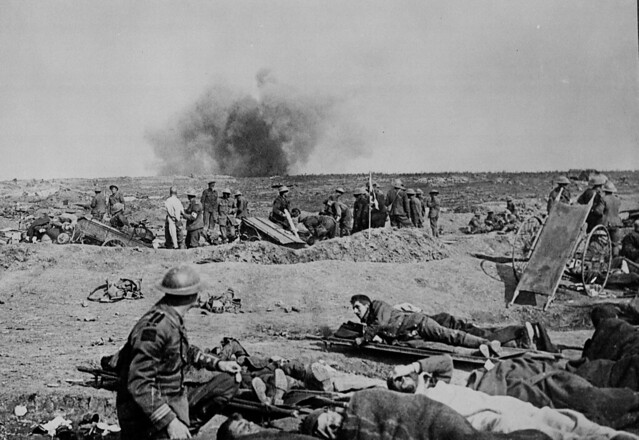On July 1, 1916, when they were ordered to face German machine gun fire, over 800 members of the Newfoundland Regiment only had rifles and bayonets as they headed into the Battle of Somme. It began at 6:25am at Beaumont-Hamel, in Somme — an area in northern France. For the Newfoundlanders, it was all over three hours later. The next morning, only 68 soldiers answered the roll call.
When Great Britain declared war on Germany in 1914, Newfoundland, a separate British dominion, offered to recruit 500 men to serve overseas. Then a self-governing country, Newfoundland had no military and began recruiting volunteers from its population of about 240,000.
“If you are between 19 and 35 years old, will you answer your Country’s Call?” read an Enlistment Proclamation that appeared in The Daily News on August 22, 1914.
And so the Newfoundland Regiment was formed. They trained at Pleasantville in St. John’s and headed to Plymouth, England two months later, aboard the S.S. Florizel.
Two years later, on July 1, 1916, the regiment found itself at Beaumont-Hamel fighting against Germany alongside British and French soldiers. But it was a devastating loss with severe casualties.
"The Germans actually mowed us down like sheep," Newfoundlander soldier Private James McGrath later told the Newfoundland Quarterly in 1918. After about 17 hours of laying on the battlefield, he finally made it to safety.
By the end of the 141-day battle on November 18, more than 1.2 million men from both sides were wounded or killed. Between Canada and Newfoundland, more than 26,000 soldiers died. The death toll sent shock waves around Newfoundland.
To view the slideshow, hover over the image and click on the arrows that appear. Viewing this on an app? Click here for a better experience.
Allied leaders took note of the Regiment’s sacrifice at Beaumont-Hamel.
“Newfoundland may well feel proud of her sons,” wrote Sir Douglas Haig Commander-in-Chief of the British Forces. “The heroism and devotion to duty they displayed on 1st July has never been surpassed."
In 1917, King George V recognized the volunteer regiment's courage, skill and valour by adding the extraordinary prefix "Royal". By the end of the First World War in 1918, over 6200 Newfoundlanders had served.
In July 2016, on the 100th anniversary of the Battle of Somme, a delegation of Canadian students, veterans and parliamentarians remembered the Newfoundlanders’ contribution, near the French village of Miraumont. At a ceremony in St. John's, Princess Anne, colonel-in-chief of the Royal Newfoundland Regiment, laid a wreath of remembrance.
Here is a closer look at the Beaumont-Hamel Newfoundland Memorial in France commemorating the Newfoundland soldiers who fought in the Battle of Somme and the First World War.
Home to the Newfoundland Memorial, this 30-hectare site in Beaumont-Hamel, France pays special tribute to the soldiers of the Newfoundland Regiment and marks the battlefield and key locations where they fought and died in the Battle of the Somme. The site symbolizes the contributions of Newfoundlanders during the First World War and also serves as a memorial to those Newfoundland soldiers who died in battle but have no known grave.To learn more about each of the key locations at this site and see photos, click on the markers in the Map Legend. (SOURCE: Based on a map by Veterans Affairs Canada)

























